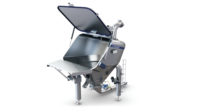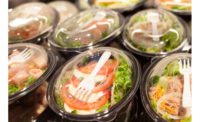Study: 93M U.S. adults interested in trying meal kits for the first time
Over a quarter of recent users are purchasing meal kits both in-store and online, according to this study.

The meal kit market is quickly evolving from nearly exclusively online and subscription-based, home delivery services to on-demand availability in store and online. And, over a quarter of recent users are purchasing meal kits both in-store and online, according to a study produced by The NPD Group, Chicago. While meal kit marketers and users are experimenting to find the right fit, there are 93 million consumers who have never tried a meal kit, but are interested in giving them a try, according to the “What’s Next for Meal Kits” report.
“There is an untapped market for meal kits, and it’s up to meal kit providers and retailers to find out what it will take to get a potential meal kit user to become one,” says Darren Seifer, food industry analyst. “The subscription model is likely to remain relevant, but it’s important to remember consumers are looking for meal solutions both online and in stores.”
A good start to reaching those interested in trying meal kits is knowing who typically uses meal kits. Meal kit users are more likely to be Millennials, have households with kids and maintain higher incomes. Online and in-store meal kits appeal to similar demographic groups, although in-store kits skew to households with children less than 13 years old and higher income levels.
“Meal kits are here for the long-term because they’re meeting the needs of consumers by providing a level of convenience and shortcuts to meal prep while also providing fresh foods,” says Seifer. “Meal kits marketers looking to capitalize on providing meal solutions should follow consumers to all their points of purchase.”
Looking for a reprint of this article?
From high-res PDFs to custom plaques, order your copy today!






